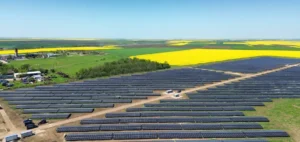Australia’s largest energy producer AGL announced on Thursday that it would close its coal-fired power plants, a decade earlier than its previously set target.
The Loy Yang A power plant in the southeastern state of Victoria will cease all coal-fired power generation by mid-2035, said AGL, the country’s largest carbon emitter. The closure would complete AGL’s withdrawal from coal-fired power plants, the company said.
“This is one of the most significant decarbonization initiatives in Australia,” said Patricia McKenzie, group president.
For the past year, AGL, which owns three of the country’s largest coal-fired power plants, has been under intense pressure from environmental groups and shareholder activists to accelerate its move away from coal.
The group also confirmed that its main coal-fired power plant Bayswater, in New South Wales, is on track to close before 2033.
The group’s new interim CEO, Damien Nicks, called the closures “a big step forward on the path to decarbonization in Australia.”
The announcements are a major shift for the group, which had previously railed against attempts by its largest shareholder, billionaire and environmental advocate Mike Cannon-Brookes, to push for the change.
Earlier this year, it attempted to buy AGL for $6 billion, an offer that the group rejected earlier this year as “undervalued.”
Two months later, AGL announced the departure of its president Peter Botten, its general manager Graeme Hunt and members of its board of directors.
McKenzie said the group is in a race to achieve carbon neutrality because a healthy business allows “access to more capital and attracts new investors.”
Once Loy Yang A is no longer operational, AGL will not generate any direct or indirect carbon emissions, according to McKenzie.
This week, the state of Queensland said it would build one of the world’s largest pumped hydro energy storage systems, and the Victorian government has committed to building enough renewable energy storage for half of the state’s homes by 2035.
Australia currently has the highest per capita coal-related carbon emissions in the world, according to a study by think tank Ember released in May.






















